Love$ is one of the malicious programs that belong to the family of ransomware named Dharma. The person who discovered Love$ is Jakub Kroustek. This ransomware renames encrypted files by adding victim’s ID, im.online@aol.com email address and appending the “.love$” extension to their filenames. For example, it renames “1.jpg” to “1.jpg.id-1E857D00.[im.online@aol.com].love$”, and os on. Also, it drops the “FILES ENCRYPTED.txt” ransom notes in all folders that contain encrypted files and displays another ransom note in a pop-up window. 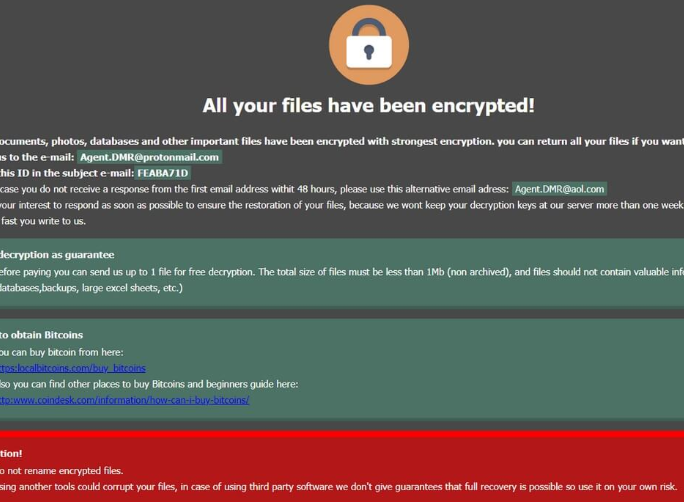
There’s the option of paying the ransom to get a decryption utility, but that’s not suggested. Giving into the requests won’t necessarily ensure that your data will be recovered, so expect that you might just be wasting your money. It may be naive to think that crooks will feel any responsibility to aid you in file recovery, when they do not have to. The future activities of these cyber crooks would also be financed by that money. Do you really want to be a supporter of criminal activity. The more victims pay, the more profitable it becomes, thus attracting more crooks who want to earn easy money. Situations where you might end up losing your files are quite typical so it might be better to buy backup. You could then simply remove .Love$ extension virus and recover data. You could also not know how file encoding malware spreads, and we will discuss the most common ways in the below paragraphs.
Ransomware distribution methods
Quite basic ways are used for spreading data encrypting malicious programs, such as spam email and malicious downloads. Because people tend to be pretty careless when dealing with emails and downloading files, there is usually no need for ransomware spreaders to use more elaborate methods. Nevertheless, some ransomware do use more elaborate methods. Hackers do not have to put in much effort, just write a generic email that looks somewhat authentic, attach the contaminated file to the email and send it to hundreds of people, who may believe the sender is someone trustworthy. Those emails usually mention money because due to the sensitivity of the topic, people are more inclined to open them. And if someone who pretends to be Amazon was to email a person about questionable activity in their account or a purchase, the account owner may panic, turn hasty as a result and end up opening the attachment. When you are dealing with emails, there are certain things to look out for if you want to secure your device. If you are unfamiliar with the sender, investigate. Even if you know the sender, don’t rush, first check the email address to ensure it matches the address you know belongs to that person/company. Those malicious emails are also frequently full of grammar errors. Another big hint could be your name not used anywhere, if, lets say you use Amazon and they were to send you an email, they would not use universal greetings like Dear Customer/Member/User, and instead would insert the name you have provided them with. Unpatched program vulnerabilities might also be used by ransomware to enter your computer. Those vulnerabilities are generally found by malware researchers, and when software creators become aware of them, they release patches to repair them so that malware developers cannot exploit them to distribute their malicious software. However, judging by the spread of WannaCry, obviously not everyone rushes to install those patches. You’re recommended to install a patch whenever it is released. Updates can install automatically, if you do not wish to bother with them every time.
How does it act
When your computer becomes contaminated with data encrypting malicious programs, it will scan for specific files types and encode them once they are found. Initially, it might not be obvious as to what’s going on, but when your files can’t be opened as usual, you’ll at least know something isn’t right. You’ll also notice a strange extension attached to all files, which assists users in identifying which file encrypting malicious software they have. Strong encryption algorithms might have been used to encrypt your data, which may mean that you cannot decrypt them. In the ransom note, crooks will explain that they’ve encrypted your data, and offer you a way to restore them. Their proposed method involves you buying their decryption software. Ransom amounts are generally specified in the note, but occasionally, cyber crooks request victims to send them an email to set the price, it might range from some tens of dollars to a couple of hundred. As we’ve already discussed, we don’t suggest paying for a decryptor, for reasons we have already specified. If you’re set on paying, it should be a last resort. Try to remember maybe you don’t remember. A free decryption software might also be available. There are some malware specialists who are able to crack the ransomware, therefore a free decryptors could be released. Consider that before paying the ransom even crosses your mind. If you use some of that sum on backup, you wouldn’t face possible file loss again as you could always access copies of those files. And if backup is an option, you can recover data from there after you terminate .Love$ extension virus virus, if it is still on your computer. Try to familiarize with how ransomware spreads so that you do your best to avoid it. At the very least, don’t open email attachments left and right, update your programs, and stick to real download sources.
Ways to eliminate .Love$ extension virus virus
an anti-malware program will be necessary if you wish to get rid of the file encrypting malware in case it is still inhabiting your device. If you are not experienced when it comes to computers, accidental damage could be caused to your computer when attempting to fix .Love$ extension virus virus manually. Instead, we recommend you use a malware removal utility, a method that would not put your device in jeopardy. These types of utilities exist for the purpose of getting rid of these kinds of threats, depending on the tool, even preventing them from getting in. Once you have installed the anti-malware tool, simply execute a scan of your device and allow it to eliminate the threat. However unfortunate it might be, an anti-malware software it’s not capable of restoring your files. When your device is clean, begin to routinely back up your files.
Offers
Download Removal Toolto scan for .Love$ extension virusUse our recommended removal tool to scan for .Love$ extension virus. Trial version of provides detection of computer threats like .Love$ extension virus and assists in its removal for FREE. You can delete detected registry entries, files and processes yourself or purchase a full version.
More information about SpyWarrior and Uninstall Instructions. Please review SpyWarrior EULA and Privacy Policy. SpyWarrior scanner is free. If it detects a malware, purchase its full version to remove it.

WiperSoft Review Details WiperSoft (www.wipersoft.com) is a security tool that provides real-time security from potential threats. Nowadays, many users tend to download free software from the Intern ...
Download|more


Is MacKeeper a virus? MacKeeper is not a virus, nor is it a scam. While there are various opinions about the program on the Internet, a lot of the people who so notoriously hate the program have neve ...
Download|more


While the creators of MalwareBytes anti-malware have not been in this business for long time, they make up for it with their enthusiastic approach. Statistic from such websites like CNET shows that th ...
Download|more
Quick Menu
Step 1. Delete .Love$ extension virus using Safe Mode with Networking.
Remove .Love$ extension virus from Windows 7/Windows Vista/Windows XP
- Click on Start and select Shutdown.
- Choose Restart and click OK.

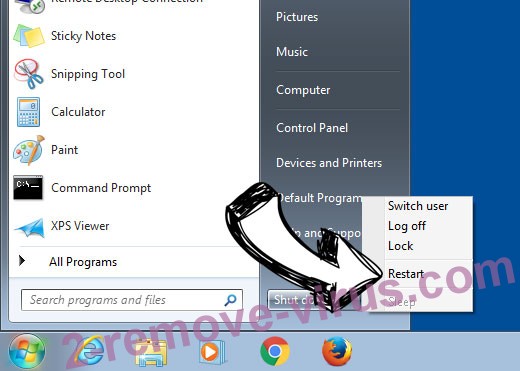
- Start tapping F8 when your PC starts loading.
- Under Advanced Boot Options, choose Safe Mode with Networking.

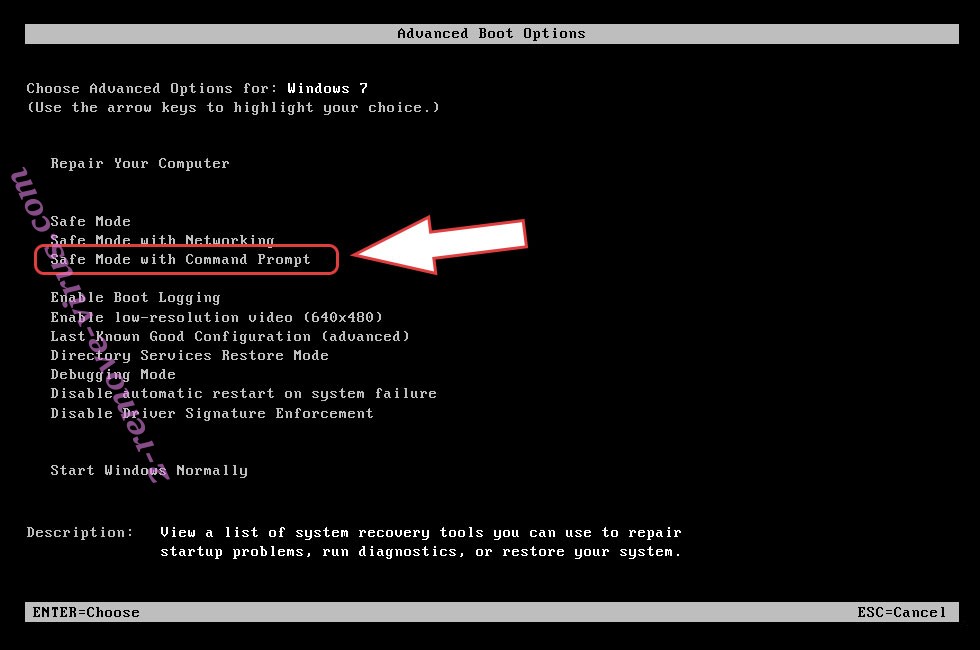
- Open your browser and download the anti-malware utility.
- Use the utility to remove .Love$ extension virus
Remove .Love$ extension virus from Windows 8/Windows 10
- On the Windows login screen, press the Power button.
- Tap and hold Shift and select Restart.

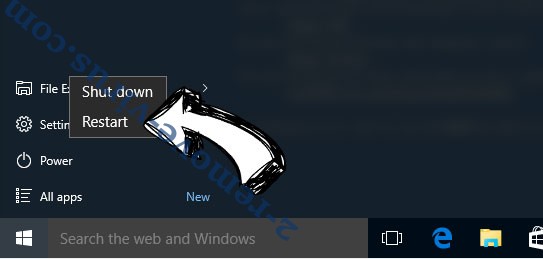
- Go to Troubleshoot → Advanced options → Start Settings.
- Choose Enable Safe Mode or Safe Mode with Networking under Startup Settings.

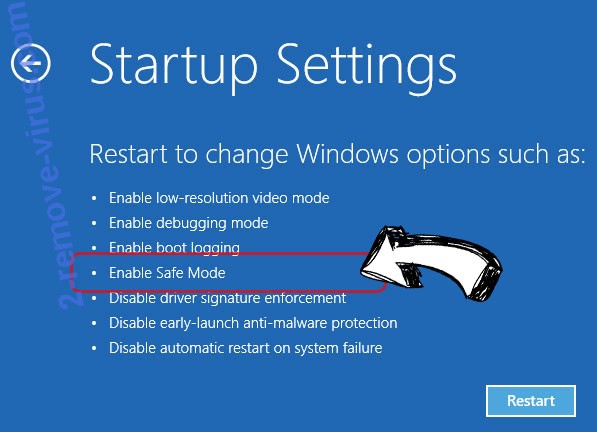
- Click Restart.
- Open your web browser and download the malware remover.
- Use the software to delete .Love$ extension virus
Step 2. Restore Your Files using System Restore
Delete .Love$ extension virus from Windows 7/Windows Vista/Windows XP
- Click Start and choose Shutdown.
- Select Restart and OK


- When your PC starts loading, press F8 repeatedly to open Advanced Boot Options
- Choose Command Prompt from the list.

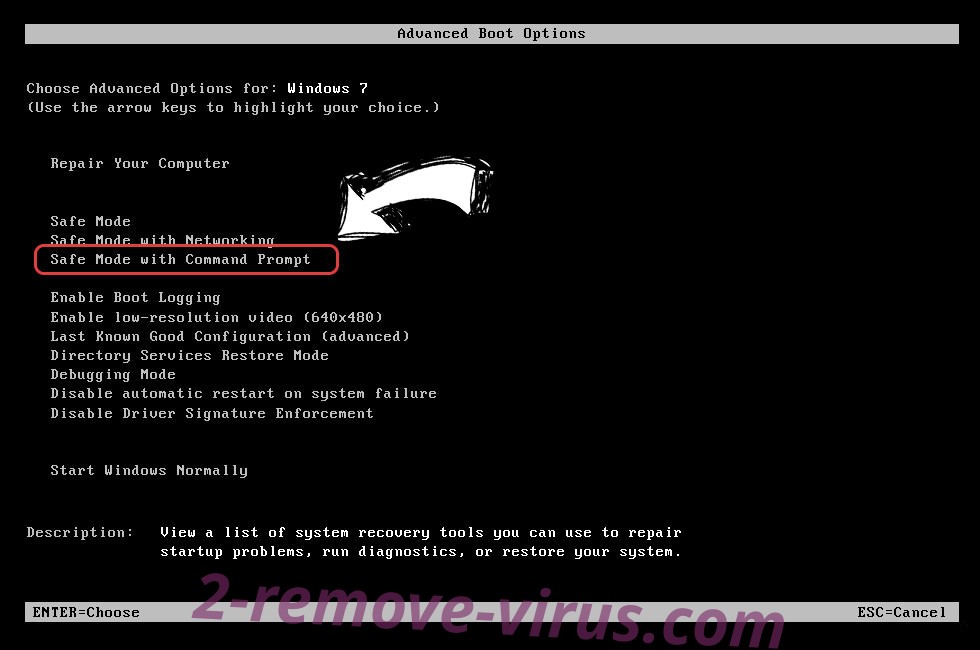
- Type in cd restore and tap Enter.

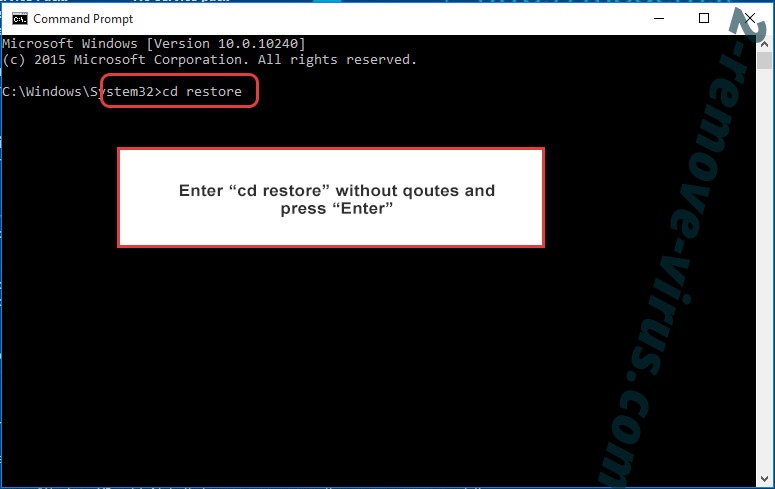
- Type in rstrui.exe and press Enter.

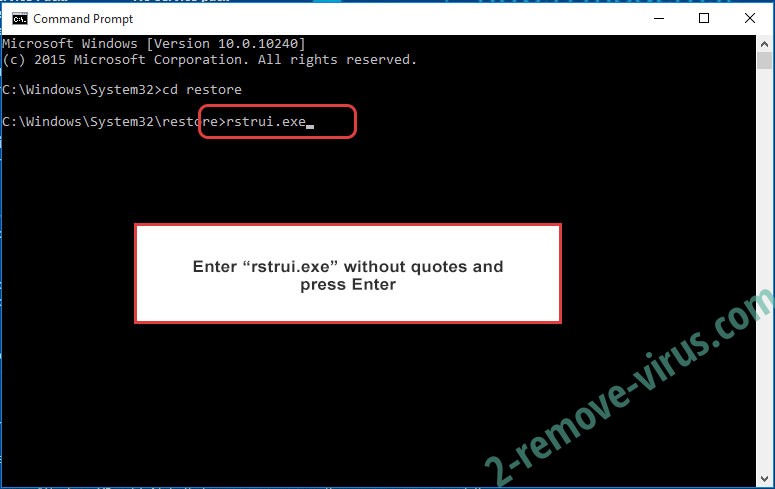
- Click Next in the new window and select the restore point prior to the infection.

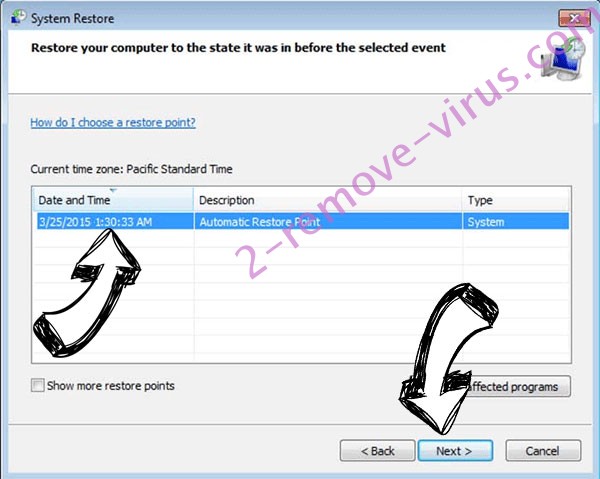
- Click Next again and click Yes to begin the system restore.

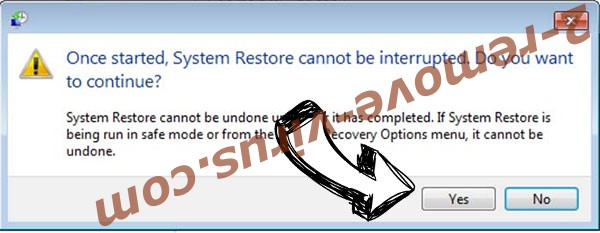
Delete .Love$ extension virus from Windows 8/Windows 10
- Click the Power button on the Windows login screen.
- Press and hold Shift and click Restart.


- Choose Troubleshoot and go to Advanced options.
- Select Command Prompt and click Restart.

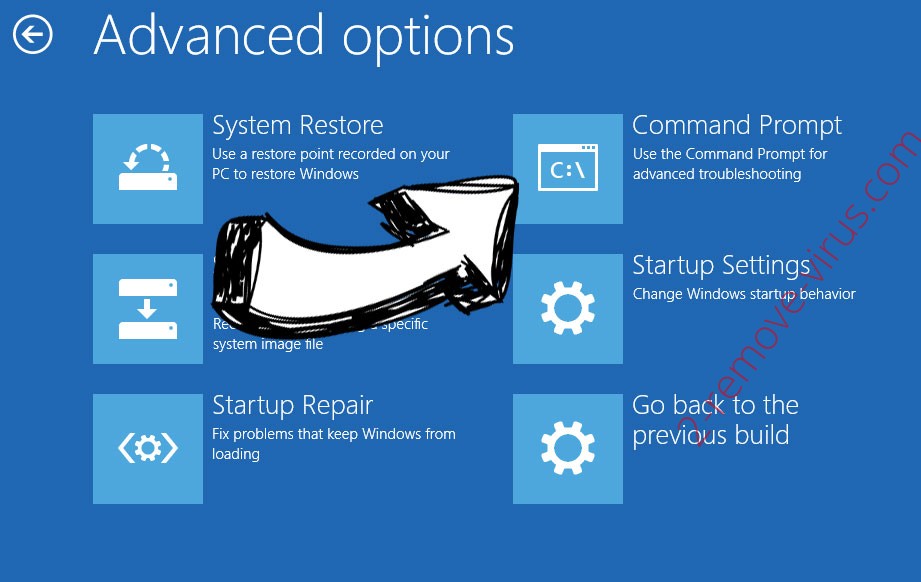
- In Command Prompt, input cd restore and tap Enter.


- Type in rstrui.exe and tap Enter again.


- Click Next in the new System Restore window.

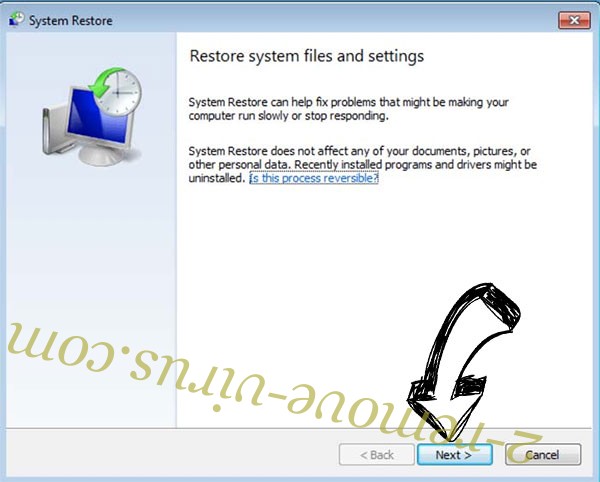
- Choose the restore point prior to the infection.


- Click Next and then click Yes to restore your system.


Site Disclaimer
2-remove-virus.com is not sponsored, owned, affiliated, or linked to malware developers or distributors that are referenced in this article. The article does not promote or endorse any type of malware. We aim at providing useful information that will help computer users to detect and eliminate the unwanted malicious programs from their computers. This can be done manually by following the instructions presented in the article or automatically by implementing the suggested anti-malware tools.
The article is only meant to be used for educational purposes. If you follow the instructions given in the article, you agree to be contracted by the disclaimer. We do not guarantee that the artcile will present you with a solution that removes the malign threats completely. Malware changes constantly, which is why, in some cases, it may be difficult to clean the computer fully by using only the manual removal instructions.
